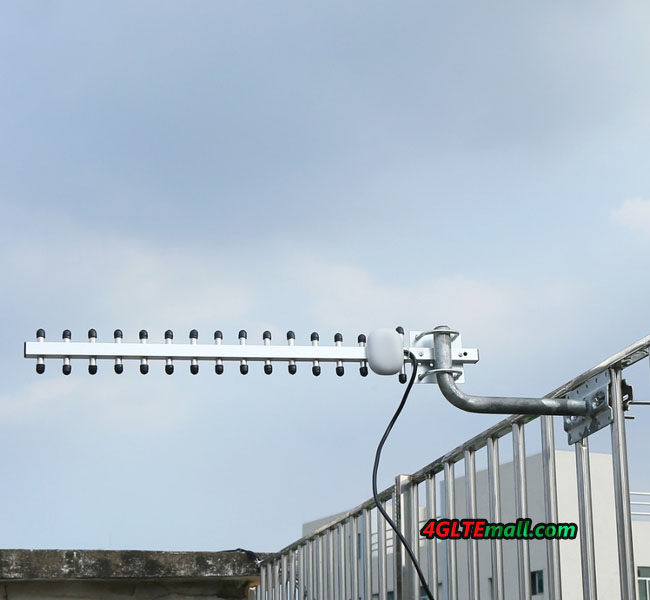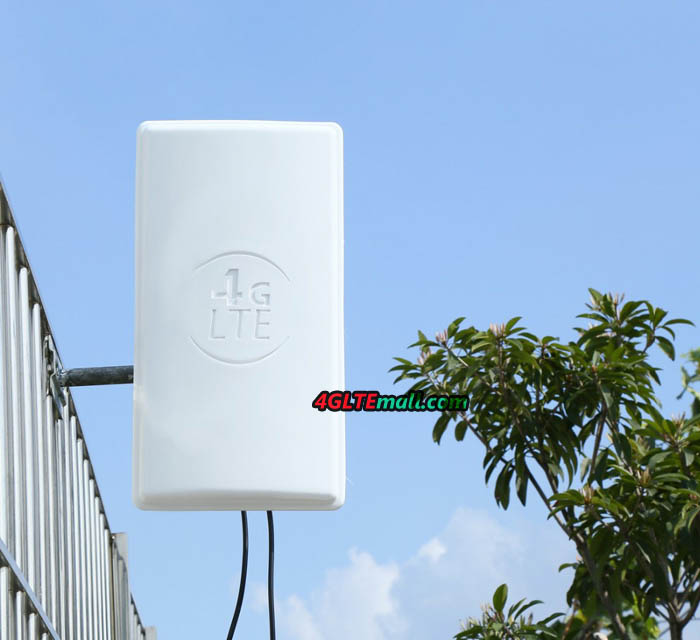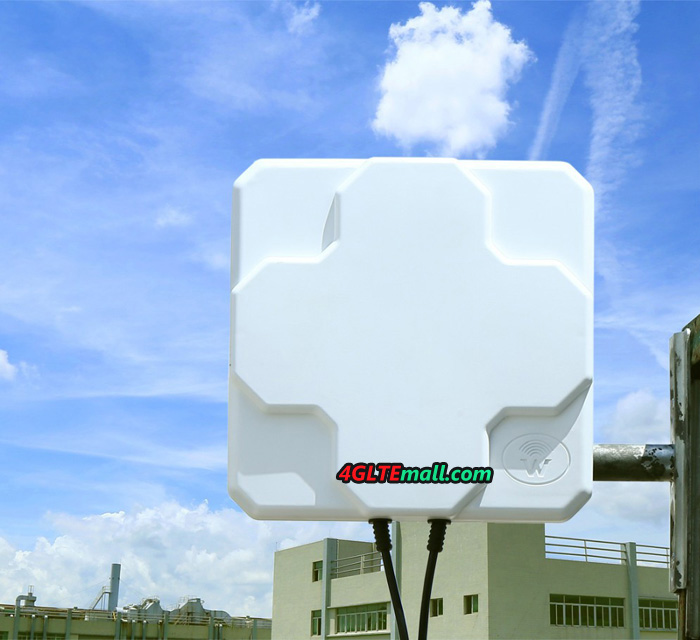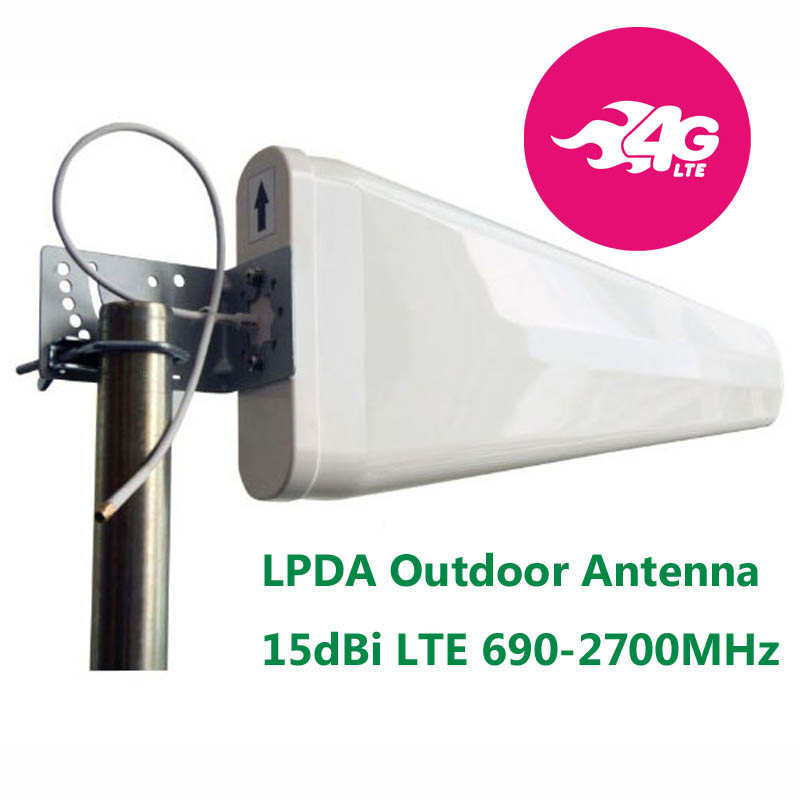More and more 4G LTE Routers and 4G USB modems are available in the market; many users would expect faster speed on 4G networks than that from 3G networks. However, due to far from the cell tower deployed by the network providers, the 4G/LTE signal coverage is very weak. Before the network providers do something to change the situation, users can connect an external 4G antenna to the wireless device to improve the signal so as to speed up the data transmission. And it’s better to use a high gain outdoor antenna rather than indoor 4G antenna.
To select a 4G external antenna, you need check how many antenna connectors there is on your device and the connector type. For example, if you are using Huawei E5186 4G LTE Router, open the cover on the back, you will find the connector for external 4G antenna. The connector type is SMA-female. In the 4G data transmission, two connectors are for the application MIMO technology. So you’d better choose an LTE Antenna with two connectors. To connect to the SMA-female, the right connector at the cable end of the antenna is SMA-male.
One more thing to consider is how long the distance between the router and the location where to install the antenna. The distance determines the length of the antenna extend cable. For example, if your Huawei E5186 router is near the window and you will install the outdoor LTE antenna just outside the window less than 10 meters. So you can select the extend cable of 10 meters. Somebody may suppose the longer the cable, the better to use. However, consider the longer of the cable, the gain would lose more. So the antenna cable is better in short. If your device is far from the installation point, you’d better select to use high-quality material in the cable so as to reduce the gain loss.
The good news is that the extend cable for the outdoor LTE antenna could be customized on www.4gltemall.com. So you don’t need worry about the cable. Below are recommended Outdoor LTE External antenna to use with 4G LTE Gadgets:
- 4G High Gain 24dBi LTE Panel Flat Outdoor Antenna(With Two connectors)
Technical Specifications:
* Frequency Range: 698-806MHZ/824-894mhz/ 925-960mhz/1710-1885MHZ/1920-1980MHZ/2110-2170MHZ/2500-2690MHZ
* Gain: 24dbi
* Polarization Type: Vertical
* Radiation: Omni directional
* VSWR:≤1.5
* Impedance: 50Ω
* Max Power: 50w
* Connector Type: customization (The extend cable can be with SMA, TS-9, CRC or other connectors.)
* Cable Type: RG58 (best) 100% cooper
* Cable Length: for customization
* Dimensions: 9.85x 18.5x 1.2inches
* Weight: 2.58 Pound
See compatible 4G LTE devices and buy this high gain antenna here: https://www.4gltemall.com/4g-high-gain-lte-panel-flat-outdoor-antenna.html
- 18dBi High Gain Flat Panel 4G Outdoor Antenna(With Two connectors)
Technical Specifications:
* Frequency Range: 698-806MHZ/824-894mhz/ 925-960mhz/1710-1885MHZ/1920-1980MHZ/2110-2170MHZ/2500-2690MHZ
* Gain: 18dbi
* Polarization Type:Vertical
* Radiation: Omni
* VSWR: ≤1.5
* Impedance: 50Ω
* Max Power: 50w
* Connector Type: options (SMA, TS-9, CRC-9 connectors)
* Cable Type: RG58(best)100% cooper
* Cable Length: customization
* Color: White(default), Black
* Dimensions: 8.27x 8.27x 1 inches
* Weight: 1.32 Pound
See compatible 4G LTE devices and buy this high gain antenna here: https://www.4gltemall.com/high-gain-flat-panel-4g-outdoor-antenna.html
- 28dBi High Gain 4G Outdoor Yagi Directional Antenna(With only one connector)

Technical Specifications:
* Frequency Range: 698-806MHZ/824-894mhz/ 925-960mhz/1710-1885MHZ/1920-1980MHZ/2110-2170MHZ/2500-2690MHZ
* VSWR: ≤ 2.5
* Gain: 28dBi
* Polarization Type: Vertical
* Radiation: Directional
* Input Power: 50W
* Input Impedance: 50 Ohms
* Connector Type: SMA/TS-9/CRC-9
* Connector Quantity: one
* Cable Type: RG58 (best) 100% cooper
* Cable Length: 1.5m (more options for extend cable available.)
* Dimensions: 22.8x 2.7 x 0.8inches
* Weight: 0.42 Pound
See compatible 4G LTE devices and buy this high gain antenna here:
https://www.4gltemall.com/28dbi-high-gain-4g-outdoor-yagi-directional-antenna.html
- 15dBi 4G LPDA LTE Outdoor Antenna(With only one connector)
Technical specifications:
* Antenna type: LPDA
* Frequency Range (MHz): 698-960/1710-2700 MHz
* Bandwidth: 262/990 MHz
* Gain: 15 dBi
* beam width: H:90°/70° V:60°/55°
* VSWR: ≤1.5
* Input Impedance: 50Ω
* Polarization: Vertical or Horizontal
* Front to Back Ratio: 18dB
* Max, power: 50W
* Connector Qty: 1
* Connector Type on Antenna: SMA-Male/TS-9/CRC-9
* Cable: 10 meters/15 meters/20 meters (RG58)
* Radome material: protected ABS
* Lightning Protection: DC ground
* Working Temperature: -40~60℃
* Rated Wind Velocity: 60m/s
* Color: white
* Mounting way: hold in the pole
* Pole diameter: ¢35-50
* Dimension (mm): 410*215*65mm
* Antenna weight: 750g
* Package content:
– 1 x LPDA Antenna
– Extend cable
– Accessories to mount the antenna
See compatible 4G LTE devices and buy this high gain antenna here:
https://www.4gltemall.com/wide-band-log-periodic-yagi-lte-outdoor-antenna.html


